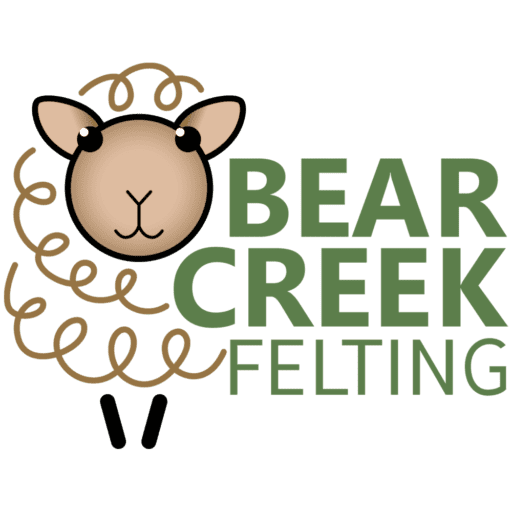 When I was a novice needle felter, I made mistake after mistake. I stabbed myself more times than I can count, I spent more time on projects than was necessary, I broke needles, I was lucky enough to be raising the very wool that is the best for needle felting. It was an adventure, to say the least.
When I was a novice needle felter, I made mistake after mistake. I stabbed myself more times than I can count, I spent more time on projects than was necessary, I broke needles, I was lucky enough to be raising the very wool that is the best for needle felting. It was an adventure, to say the least.
All that to say, a lot of what I know now I learned through trial and error. I made mistakes and figured things out and now I get to share everything I’ve learned with you. So, without further adieu, here are some of the most important tips and tricks I’ve learned on my needle felting journey.
 1. Use a Felting Cushion
1. Use a Felting Cushion
Using a felting cushion when you’re needle felting is essential. They make felting safe and prevent you from getting stabbed while you felt. At Bear Creek Felting, we have designed a needle felting pillow that provides the absolute smoothest and most comfortable needle felting experience.
2. Use a Felting Needle Holder and the Right Size Needle
I’ve learned that the right tools make all the difference in needle felting. I tried out loads of tools when I first began, like wood holders, Plasti Dip, various sizes of needles, and more. Some tools were uncomfortable, some broke, and some just didn’t work well at all.
The free option is putting a needle in a pen and packing wool in it to hold the needle in place, my favorite option is the single needle felting tool we sell at Bear Creek Felting that is super comfortable and easy to change out the needle when needed.
When it comes to needle size, Star 36 is the one I use most because it works great with my favorite wool, Romney wool. You can try out a single Star 36 and other needle sizes depending on the type of wool you use.
 3. Use the Right Wool
3. Use the Right Wool
There are so many wool choices out there that you’ll want to experiment with. Just make sure not to use any Superwash wool, as it is treated and processed so that it doesn’t felt. I recommend trying Romney and Icelandic wool. It’s important that you know where your wool is coming from and that the sheep are raised ethically and that the farmer is using sustainable regenerative farming practices.
4. You Don’t Need to Use Armature
Bear Creek wool felts very solidly so that you do not need armatures to make them sturdy.
5. Use Short Quick Stabs
Oftentimes, people new to felting will stab the needle deep into the wool. This is unnecessary and requires that you put a lot more effort into felting than you need to. Most of the barbs on a felting needle are near the tip of the needle, which means you don’t have to stick it in very far. By using short, quick stabs, you can speed up the felting process and get things done faster, without all the effort!
Bear Creek Felting exists to make felting easy for people. These are just some of the top tips and tricks I’ve learned as a needle-felter. If you’d like to learn more, you may want to consider joining the Academy. I created it to give people a community of support and guidance, as well as simple lessons in needle felting. Check out our offerings and visit us on Instagram!





